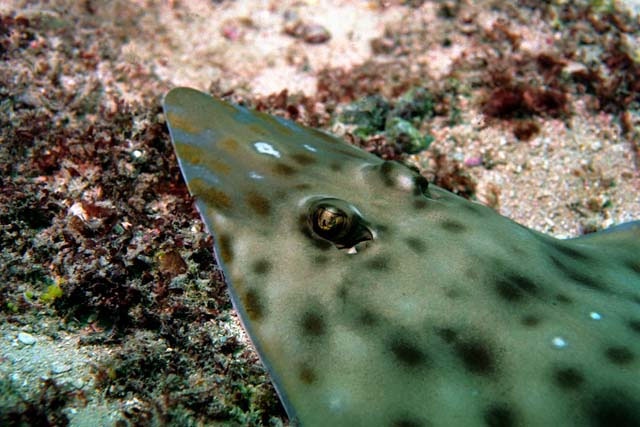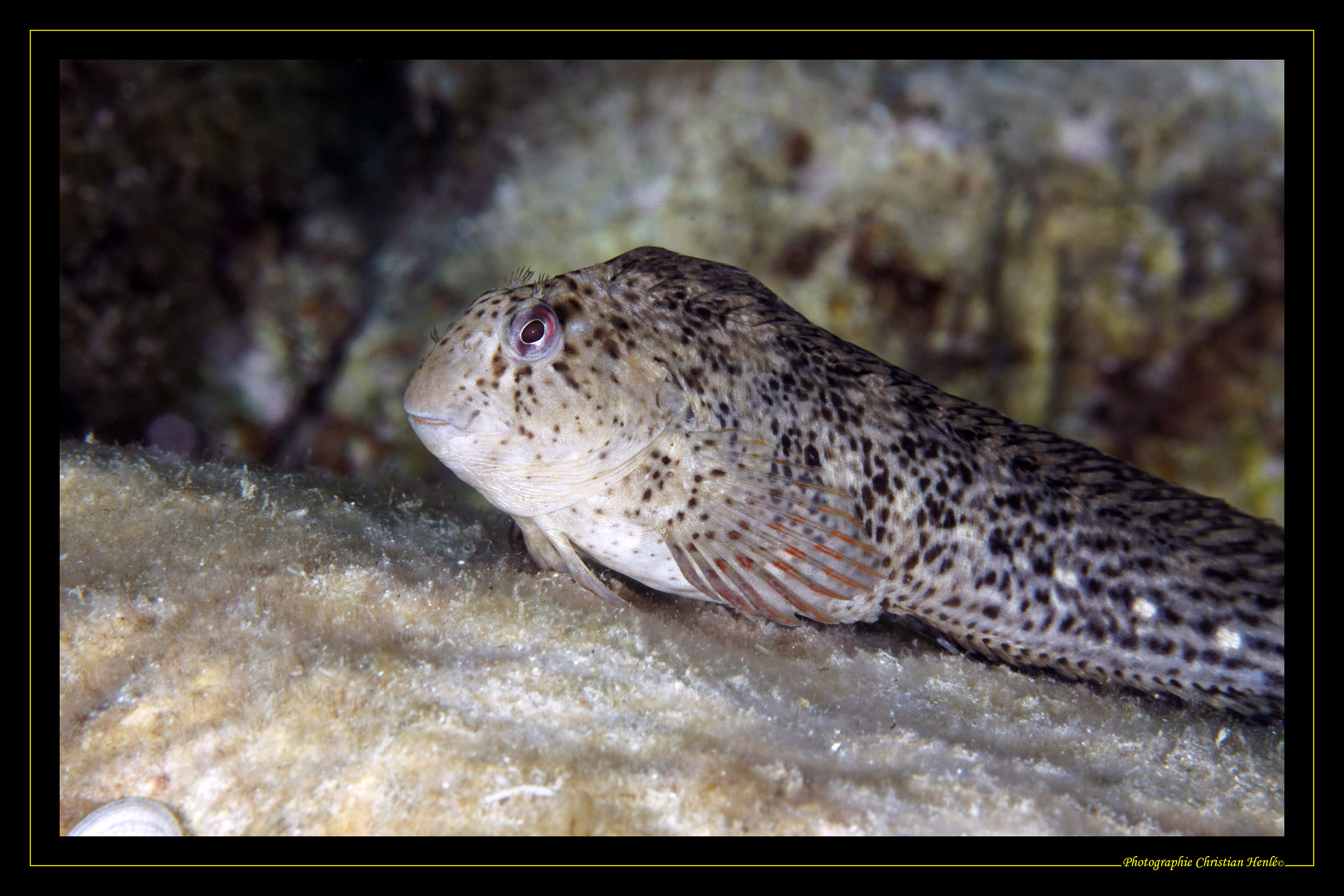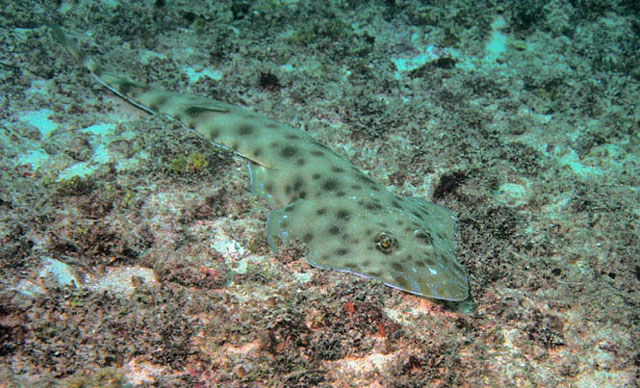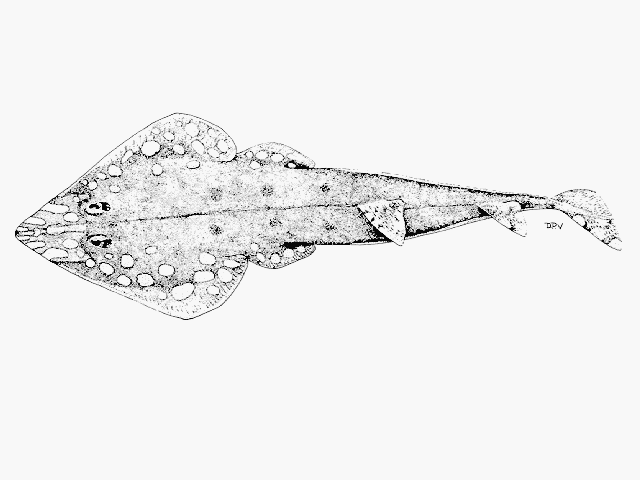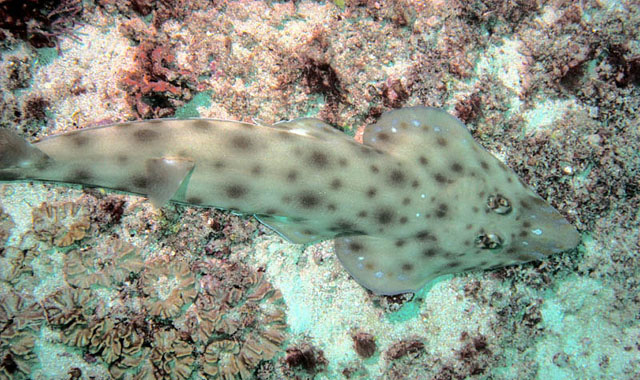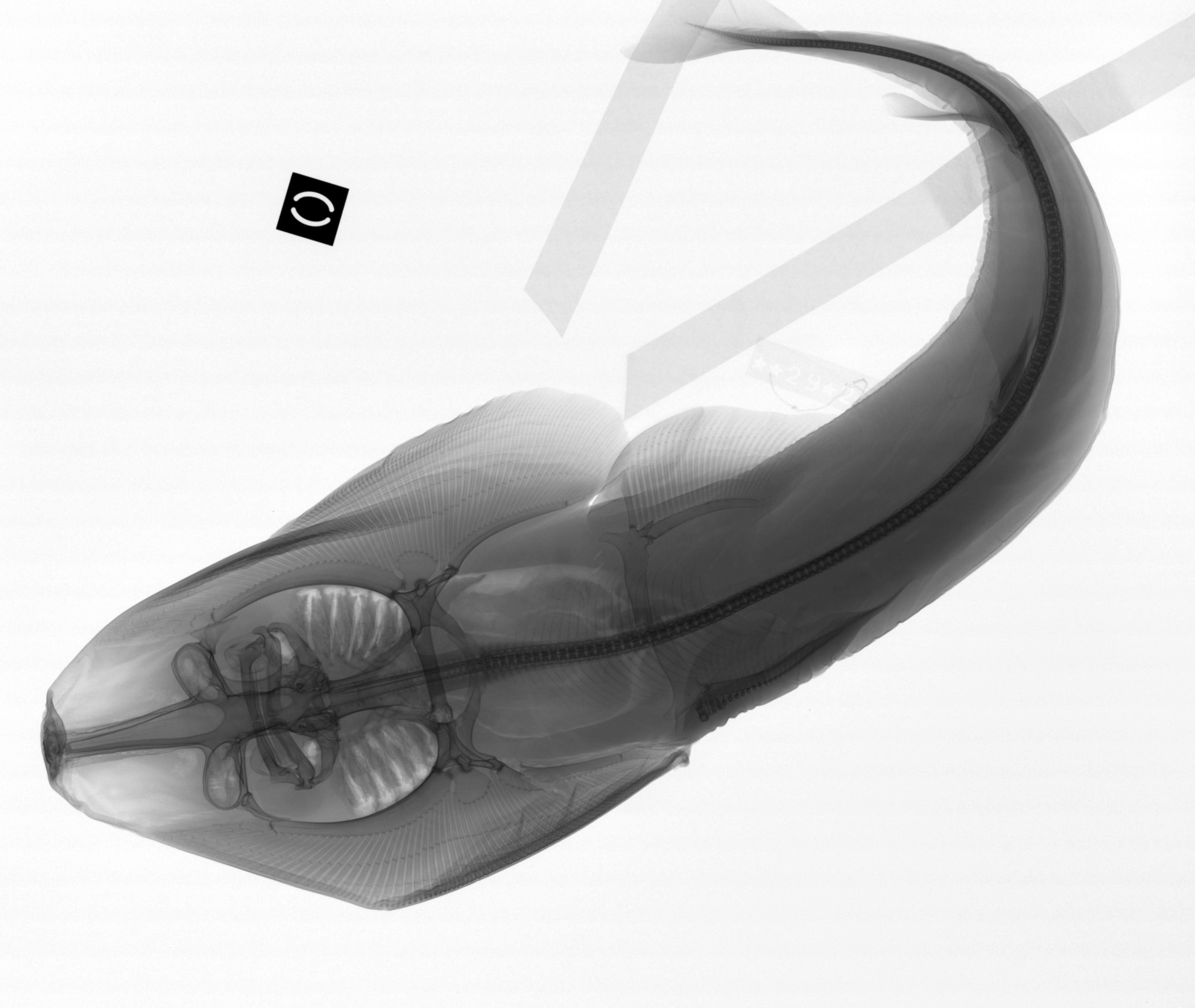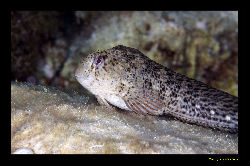Acroteriobatus leucospilus (Norman, 1926)
Description
Vertebrae: 200 - 205. This medium-sized species is distinguished by the following set of characters: dorsal surface smooth, no prominent thorns or tubercles, except for slightly enlarged granular denticles partially around orbital rims, and rather regularly distributed along midline from nape to near first dorsal-fin origin, none between dorsal fins and upper caudal fin; snout semi-translucent with elongated bluish spots giving stripe-nosed appearance, numerous small bluish spots covering the snout, pectoral, pelvic, dorsal, and caudal fins but not the central disc, on a sandy brown background with darker brown spots of varying sizes covering the disc, tail, fin bases, and fins, and sometimes giving the caudal peduncle a striped appearance, the outer edges of pectoral- and pelvic-fin margins blue, while lateral tail folds white or striped blue and brown and ventral surface white; nasal lamellae 37-41; upper jaw tooth row count ca. 60-75; post-synarcual centra 187-192; total vertebral segments 200-205; total pectoral skeleton radials 63-70 (Ref. 124452).
Common Names
Taxonomic Hierarchy
Kingdom: Animalia
Phylum: Chordata
Class: Elasmobranchii
Order: Rhinopristiformes
Family: Rhinobatidae
Genus: Acroteriobatus
Species: Acroteriobatus leucospilus (Norman, 1926)
Climate Zone
Location
Biology
Found inshore from the surf line to a depth of 100 m (Ref. 5578, 11228). Feeds on bivalves, gastropods, shrimps, crabs and small bony fishes (Ref. 5578). Common length 92-96 cm TL; males and females mature at about 56 cm TL and birth size ca. 25 cm TL (Ref. 114953). Ovoviviparous (Ref. 50449). Flesh esteemed (Ref. 3919).
Habitat
demersal
